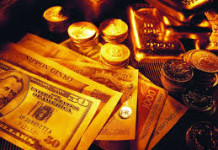Despite a commonly held belief that LGBT Americans tend to live it up in classy urban neighborhoods, they struggle with disproportionately high levels of poverty compared to straight people.Excerpted below, Nathan McDermott writes in today’s issue of The Atlantic about misperceptions of LGBT wealth and poverty:

“Who are America’s gays? To hear it as Supreme Court Justice Antonin Scalia would have it, gays are a privileged set, living it up in cities across the country. As the justice wrote in his dissent to Romer v. Evans—a landmark 1996 case that overturned a Colorado state constitutional amendment prohibiting legal protections for gays and lesbians—“Those who engage in homosexual conduct tend to reside in disproportionate numbers in certain communities.” Even more ominously, to Scalia, they have “high disposable income,” which gives them “disproportionate political power… to [achieve] not merely a grudging social toleration, but full social acceptance, of homosexuality.”
“The pernicious insinuation—that gays and lesbians are one the wealthiest demographics in the country—isn’t a new cliché. Some of the most ingrained public images of LGBT people are their cosmopolitan, highfalutin lifestyle; gays, so the story goes, live in gentrified urban neighborhoods like The Castro in San Francisco or Chelsea in New York, eat artisanal cheese, and drink $12 cocktails.
“But like most stereotypes, the myth of gay affluence is greatly exaggerated.
“In reality, gay Americans face disproportionately greater economic challenges than their straight counterparts. A new report released by UCLA’s Williams Institute found that 29 percent of LGBT adults, approximately 2.4 million people, experienced food insecurity—a time when they did not have enough money to feed themselves or their family—in the past year. In contrast, 16 percent of Americans nationwide reported being food insecure in 2012. One in 5 gays and lesbians aged 18-44 received food stamps in the last year, compared with just over 1 in 4 same sex couples raising children. The LGBT community has made huge political strides over the past decade, but in economic matters they still lag far behind the rest of the country.
“I think we have this sense, borrowing from the campaign, that ‘it gets better’,” Gary Gates, a law professor and the author of the Williams Institute’s report, told me. “And that’s true: It is getting better, but it’s not getting better everywhere all the time. Things in rural Alabama look very different from Seattle, and as more LGBT people come out, they are disproportionately more likely to come out in Alabama than Seattle.” And Alabama, like many other places where gays of another generation might have stayed in the closet or left town altogether but today are coming out, is poorer than Seattle. As a result, the number of self-reported gays and lesbians living in poverty is rising. Ironically, at first glance, this makes it appear that an increase in political and social acceptance for LGBT in Americans is accompanied by a fall in economic standing. Progress isn’t making gays and lesbians poor though, but it is allowing more poor people to acknowledge their sexuality. As these numbers become more readily available, it reminds us of why the myth of gay affluence ever existed in the first place.”
More at: http://www.theatlantic.com/business/archive/2014/03/the-myth-of-gay-affluence/284570/